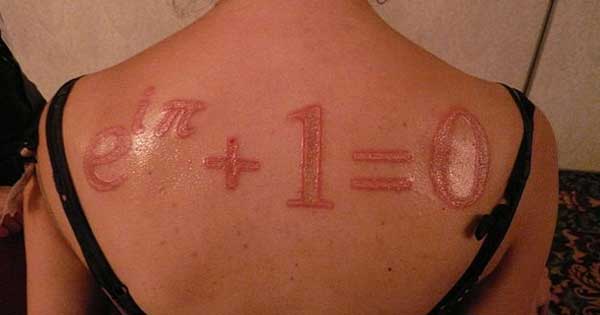Hey Good Lookin’
Brain scans show that mathematicians register degrees of beauty when shown formulas

When I heard soprano Lianna Levine sing Handel’s cantata Mi palpita il cor (“I feel my heart beating”), tears fell from my eyes. My friend’s voice was so beautiful, so pure, so impassioned, that my own heart was filled with happiness.
I did not realize it then, but research conducted by neurobiologists at University College London has shown that when people experience a beautiful piece of music or art, a specific area of the brain becomes active: field A1 of the medial orbito-frontal cortex, an emotional part of the brain that has been linked to pleasure, reward, and decision-making. Now these scientists have found that the same area of the brain lights up when mathematicians study equations they deem beautiful.
Semir Zeki and his colleagues recruited 15 postgraduate or postdoctoral mathematicians and showed them 60 mathematical formulas, asking them to rate the formulas on an aesthetic scale of -5 (ugly) to +5 (beautiful). Two weeks later, he scanned their brains with magnetic resonance imaging, again asking them—while they were in the scanner—to reappraise the equations. For comparison, he also asked a group of 12 nonmathematicians to assess the beauty of the same equations, “an unsatisfactory exercise” because most of them confessed that they were clueless as to what the formulas proved.
The equation most consistently ranked as beautiful by the mathematicians was Leonhard Euler’s equation 1 + eiπ= 0, which, according to the researchers, “links five fundamental mathematical constants with three basic arithmetic operations”—addition, multiplication, and exponentiation—each of which occurs only once. (Benjamin Peirce, an eminent 19th-century Harvard University mathematician, told his students that the formula was “absolutely paradoxical; we cannot understand it, and we don’t know what it means. But we have proved it, and therefore we know it must be the truth.”)
All of the mathematicians questioned post-scan reported that they derived “pleasure, happiness or satisfaction” from a beautiful equation; one reported feeling “a shiver of appreciation” on considering a beautiful formula, and another confessed to being “a bit excited.” Signals from the mathematicians’ brain scans showed that the more beautiful they considered the equation to be, the more active was their medial orbito-frontal cortex.
While art and mathematics would seem to be polar opposites, both can evoke an experience of beauty. I wondered, though, why some equations are considered to be more beautiful than others. Was there a fundamental quality to the “beautiful” equations in the study that unites them—simplicity, for example? That is one possibility, as Zeki wrote to me in an email: “I am not myself a mathematician, but simplicity has been regarded by mathematicians as a fundamental property. Whether simplicity alone qualifies an equation or formulation as beautiful is, however, doubtful.”
More likely, he says, is that beauty, “even in so abstract an area as mathematics, is a pointer to what is true in nature,” as Peirce had postulated. Perhaps, Zeki says, “our brains reflect the world in which we have evolved to some degree, and that the ordered structure, or the structured order, of the universe is so represented in the brain that any formulation that reveals it is considered to be beautiful and therefore truthful.”

